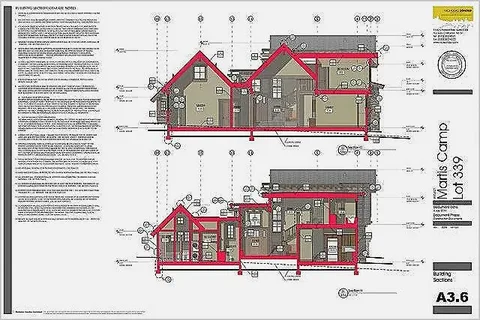In the fast-paced digital world, the layout of a website plays a crucial role in determining its success. Whether it’s a business website, blog, or e-commerce store, the layout significantly impacts user experience, navigation, and conversion rates. A well-structured layout is not just visually appealing but also enhances functionality, accessibility, and SEO performance. In this article, we’ll explore the significance of layout in web design and why it should be a top priority for web developers and designers.
What is a Layout in Web Design?
In web design, the layout refers to the arrangement of visual elements on a webpage. This includes headers, footers, sidebars, menus, content sections, images, and buttons. A good layout ensures that these elements are placed in a logical and user-friendly way, guiding the visitor through the site seamlessly.
Layouts are often categorized into different types, such as grid-based layouts, F-pattern layouts, Z-pattern layouts, and single-column layouts. Each has its own strengths and use cases depending on the website’s goal.
Why Layout Matters
A carefully planned layout enhances user experience (UX) by ensuring that visitors can find information quickly and easily. Here’s why layout is so important:
1. Improves Readability
A clean and organized layout improves the readability of your content. By using white space, appropriate font sizes, and line spacing, users are more likely to engage with your content.
2. Enhances Navigation
A well-designed layout helps users navigate the website intuitively. Menus, call-to-action buttons, and links should be easy to locate, reducing frustration and increasing time spent on site.
3. Drives Conversions
Whether you’re aiming for newsletter signups or product purchases, the layout can directly impact conversion rates. Clear call-to-action placement and streamlined content flow encourage users to take the desired action.
4. Boosts SEO
Search engines favor websites with a clear structure. A good layout supports SEO by improving page load speed, mobile responsiveness, and user engagement—all factors that influence search rankings.
Key Elements of an Effective Website Layout
To create a successful layout, focus on the following elements:
1. Visual Hierarchy
Visual hierarchy guides the user’s eye through the page, highlighting the most important elements first. This can be achieved through size, color, contrast, and positioning.
2. Consistency
Maintaining consistency in design elements such as colors, fonts, and spacing throughout the website ensures a cohesive experience and strengthens your brand identity.
3. Responsiveness
With the growing use of mobile devices, a responsive layout is essential. Your design must adapt to various screen sizes without compromising usability or aesthetics.
4. Content Organization
Group related content together and use sections or cards to make the page easy to scan. Use headings, bullet points, and images to break up large blocks of text.
5. Load Time Optimization
Heavy or poorly arranged elements can slow down your site. A streamlined layout reduces load times, improving both UX and SEO.
Best Practices for Creating an SEO-Friendly Layout
To make your layout not just user-friendly but also SEO-optimized, consider these best practices:
- Use header tags (H1, H2, H3) appropriately to structure content for both users and search engines.
- Prioritize mobile-first design to cater to a wider audience.
- Implement clear navigation paths using internal linking strategies.
- Avoid clutter; too many elements can overwhelm users and lower engagement.
- Test your layout across different browsers and devices to ensure consistency.
Conclusion
Your website’s layout is much more than just a visual design—it’s a strategic tool that affects every aspect of user interaction, from navigation and readability to conversions and SEO. A well-thought-out layout keeps visitors engaged, builds trust, and enhances your site’s performance in search engines. Whether you’re building a new website or revamping an existing one, paying close attention to your layout can make a significant difference in achieving your digital goals.




